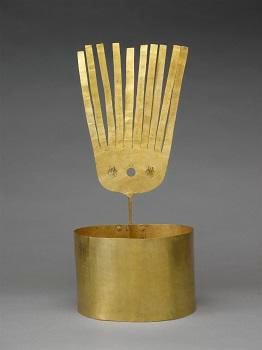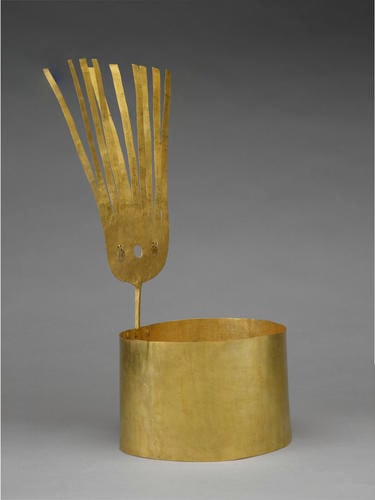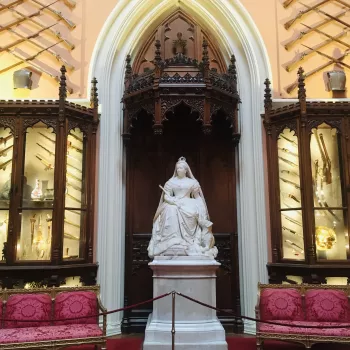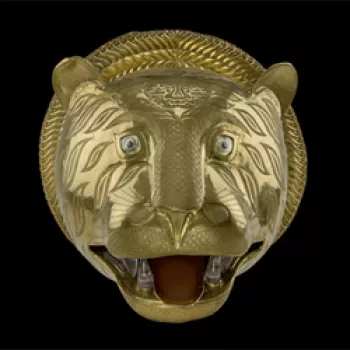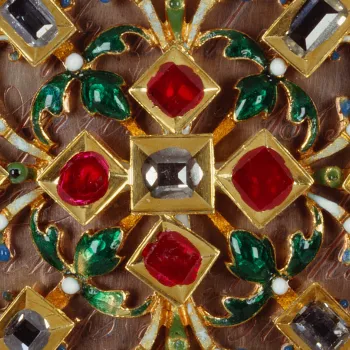Crown (llauto) 1000 - 1400
Gold | Crown: 41.4 x 19.2 x 17.0 cm (whole object) | RCIN 62903
-
A gold crown (llauto) formed of a plain band with single riveted seam, fitted at the back with a plume with fringed upper section, the lower part with three pierced circles, two fitted with suspended discs. The crown was excavated in 1854 in Chordeleg in the Cuenca region of the highlands of Ecuador, approximately one hundred and eighty miles south of the capital Quito. The main ethnic group in the area were the Cañari who ruled a powerful confederation that was conquered by invading Inca armies in the mid-fifteenth century. A large number of gold objects have been excavated in the Cuenca area, including those discovered at Chordeleg in the 1850s and Sigsig in 1889. These pieces show no Inca influence but are probably part of a Northern Andean gold working tradition which encompassed the coast and northern highlands of Peru and the southern highlands of Ecuador.
This crown shows some similarities with a crown in the National Museum of the American Indian, Washington D.C. (1/2062) and two crowns in the Museo Larco, Lima (ML 100831 and ML 100861).
The crown was presented to Queen Victoria in 1862 by the President of the Republic of Ecuador, Don Gabriel Garcia Moreno. It was delivered to the queen in London by the Ecuador Minister, Don Antonio Flores.
The crown is recorded in the Windsor Castle North Corridor Arms & Armour Inventory (1860-65) and was displayed in the North Corridor at this time.
Catalogue entry from Gold, London, 2014.Provenance
Presented to Queen Victoria in 1862 by the President of the Republic of Ecuador, Gabriel García Moreno (1821-75).
-
Creator(s)
(nationality)Acquirer(s)
-
Medium and techniques
Gold
Measurements
Crown: 41.4 x 19.2 x 17.0 cm (whole object)
Weight of crown: 17 troy ounces (whole object)
Category
Object type(s)
Place of Production
Ecuador [South America]




